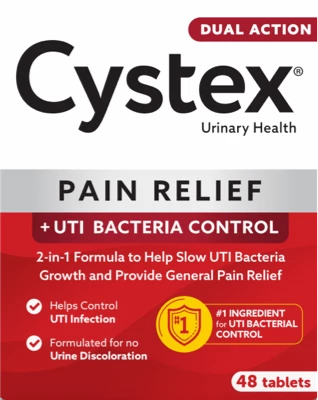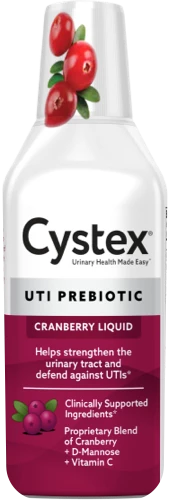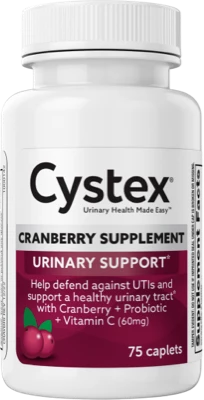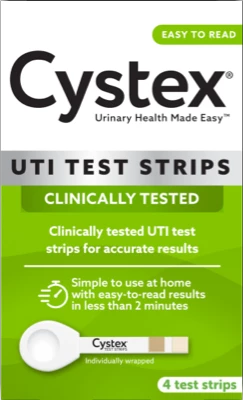10 Tips to Help Prevent a Urinary Tract Infection
- Toilet right. Remember to always wipe front to back to keep bacteria from your bottom away from your urethra. Use a clean piece of toilet tissue for each pass.1 This is not a time to recycle.
- Pee first. Snuggle later. Urinate before and after sexual activities) to help flush out any bacteria that may have snuck into your urethra while you were busy.1,2 And, as we said, wipe front to back.
- Have a drink. No, not that kind. Since you got up to pee anyway, drink a glass of water post-coitus.1 This helps you to be ready to rinse your tract again soon. And, by the way, alcohol is not your bladder’s friend, anyway. Both caffeine and alcohol are bladder irritants and alcohol can contribute to dehydration (see tip 9).2
- Change things up in the bedroom – namely your birth control method if you suffer from recurring UTIs. Diaphragms as well as some condoms (unlubricated or spermicidal varieties) can increase UTI risks.3
- Make frequent bathroom breaks a habit. Visit the loo to urinate every 2-3 hours or whenever you feel the urge and completely empty your bladder every time. The act of peeing helps to flush out the bad guys while “holding it” can give bacteria the chance to stick around and grow. Making matters worse, if your bladder gets over-full it can become more vulnerable to infection.4
- Say bye-bye to baths. Gently cleanse your private parts daily with a shower, not a bath. Bath water can easily become contaminated with flora from your various parts and can give bacteria a chance to get into your urethra.1,5
- Save money and improve your urinary health. Avoid scented feminine and bath products like douches, powders, sprays, bubbles, salts, and oils. They can irritate your urethra and increase infection risk (which will irritate you.) 3,5
- Dress the part. Wear cotton underwear, or at least undies with a cotton crotch panel. Avoid tight pants and change out of damp bottoms promptly. Bacteria, like the ones that cause UTIs, love warm, moist environments.3,4 And, as if you didn’t know this already, please put on clean underwear at least once a day.2
- Keep your privates dry as per above but your innards moist, by drinking plenty of good old-fashioned water. Most experts recommend 6-8 glasses per day*, depending on the weather and your activities. Drinking plenty of water helps to keep you peeing often and helps to make urine dilute – so bacteria has a harder time hanging around.4,6
- Try Cystex Urinary Health Maintenance to help maintain your urinary health. One tablespoon is loaded with ingredients that can benefit your urinary system including a prebiotic to help promote healthy bacteria, an anti-inflammatory to help to prevent tissue damage, an anti-adherent to help keep bad bacteria from hanging around, and an anti-oxidant to generally help protect your body.
Tips are so lovely and, well, tippy, but no such list is foolproof.
If you experience UTI symptoms like a frequent urge to urinate, a burning feeling while urinating, cloudy or strong smelling urine, or pelvic pain; contact your doctor right away. The only cure for a UTI is a prescription antibiotic.
Playing the waiting game for your appointment or medicine? Try an over-the-counter product like Cystex Pain Relief & UTI Bacteria Control Tablets to help relieve the pain associated with a UTI and keep the infection in check in the interim.
*Talk with your healthcare provider if you can’t drink the recommended amount due to other health problems, such as urinary incontinence, urinary frequency, or kidney failure.
References:
- Prevention of Urinary Tract Infections in Women. Medscape website. http://emedicine.medscape.com/article/1958794-overview. Accessed August 9, 2016.
- Urinary Tract Infection in Women – Self-Care. U.S. National Library of Medicine/MedlinePlus website https://medlineplus.gov/ency/patientinstructions/000391.htm. Accessed August 9, 2016
- Your Guide to Urinary Tract Infections (UTIs); How to Prevent Re-Infection. WebMD website http://www.webmd.com/women/guide/your-guide-urinary-tract-infections?page=3. Accessed August 8, 2016.
- Urinary Tract Infections in Adults. National Institute of Diabetes and Digestive and Kidney Diseases website https://www.niddk.nih.gov/health-information/health-topics/urologic-disease/urinary-tract-infections-in-adults/Pages/facts.aspx. Accessed August 8, 2016.
- Urinary Tract Infection in Women – Self-Care. U.S. National Library of Medicine/MedlinePlus website. Accessed August 7, 2016. https://medlineplus.gov/ency/patientinstructions/000391.htm. Accessed August 9, 2016
- Urinary Tract Infection (UTI). Mayo Clinic website http://www.mayoclinic.org/diseases-conditions/urinary-tract-infection/basics/lifestyle-home-remedies/con-20037892. Access August 9, 2016







